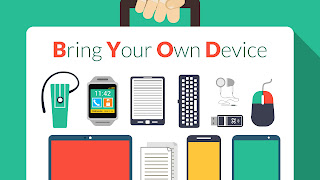Twitter Feed
Quantum Computing Delivered From The Cloud
Photo credit: Shutterstock IBM Cloud is now providing developers with the infrastructure and portal to a 5 qubit quantum computer. This equips them with the ability to build interfaces between…
Connections Redefining the Enterprise Network
Photo credit: Shutterstock The computer and the network that connects them are both inextricably linked to the success of any business. This truth is at the heart of our contemporary…
Business Chatbots Taking Over
Chat apps characteristics make them very appealing to businesses and marketers. Prominent ones include their size, user retention, usage rates, and user demographics. In fact, the combined user base of…
NCTA CloudMASTER®: The Path To Your Future
In 2016, cloud computing started to dominate many IT market segments. As a business, Synergy Research Group reported that industry revenue for the four quarters ended Sept. 30 grew 25%.…
Cybersecurity in the President Trump Administration
From the rise of increasingly capable nation-states—like Iran and North Korea—conducting destructive attacks against American private sector companies, to the continuing pace of IP theft by China striking at the…
Creating Your Digital Strategy
Photo credit: Shutterstock For many corporations, welcoming the New Year also heralds the season of strategy development and budget distribution. This year, however, companies of all sizes are struggling with…
CloudMASTER® Pays Well In The US Great Northwest
The City of Beaverton is located seven miles west of Portland, Oregon, in the Tualatin River Valley, It encompasses 19.6 square miles, and is home to more than 95,000 residents.…
NATO ACT “Art of the Possible” Interoperability Demonstration
GovCloud Network is proud to have served as the Program Manager for the NATO Allied Command Transformation, “Art of the Possible” Interoperability Demonstration on December 16, 2016. supporting the The…
Olisipo Can Make You A CloudMASTER®
Olisipo Learning in Portugal has a culture that is based on the constant search for new challenges. Recognized by their clients as the “Best HR Supplier”, they have placed more…
What is Your 2017 Business Strategy?
Photo credit: Shutterstock End of year predictions in December are as predictable as tomorrow’s sunrise, but a recent video on 2017 Technology Trends helped me really understand how important a…
- Increased employee mobility (63%), satisfaction (56%) and productivity (55%) dominate as the top drivers of BYOD. These employee related drivers are considered more important than reduced costs (47%).
- Security (39%) and employee privacy (12%) are the biggest inhibitors of BYOD adoption.
- 20% of surveyed organizations have suffered a mobile security breach, primarily driven by malware and malicious WiFi.
- Security threats to BYOD impose heavy burdens on organizations’ IT resources (35%) and help desk workloads (27%).
- Despite increasing mobile security threats, data breaches and new regulations, only 30% of organizations are increasing security budgets for BYOD in the next 12 months and 37% have no plans to change their security budgets.
- 72% – Data leakage/loss
- 56% – Unauthorized access to company data and systems
- 54% – Downloading of unsafe apps or content
- 52% – Malware
- 50% – Lost or stolen devices
- 49% – Vulnerability exploitation
- 48% – Lack of control on endpoint security
- 39% – Infrequent software updates
- 38% – Compliance
1. Create your policy before procuring technology: To effectively use mobile device management (MDM) technology for employee owned devices Policy must precede technology. Also note that these policies will have broad corporate-wide implications for IT, HR, legal, and security.
- Mobile device management
- Application security assessments
- Application testing services
- Application source code security assessments; and
- Embedded device security.
This post was brought to you by IBM Global Technology Services. For more content like this, visit ITBizAdvisor.com.
( Thank you. If you enjoyed this article, get free updates by email or RSS – © Copyright Kevin L. Jackson 2017)
Cloud Computing
- CPUcoin Expands CPU/GPU Power Sharing with Cudo Ventures Enterprise Network Partnership
- CPUcoin Expands CPU/GPU Power Sharing with Cudo Ventures Enterprise Network Partnership
- Route1 Announces Q2 2019 Financial Results
- CPUcoin Expands CPU/GPU Power Sharing with Cudo Ventures Enterprise Network Partnership
- ChannelAdvisor to Present at the D.A. Davidson 18th Annual Technology Conference
Cybersecurity
- Route1 Announces Q2 2019 Financial Results
- FIRST US BANCSHARES, INC. DECLARES CASH DIVIDEND
- Business Continuity Management Planning Solution Market is Expected to Grow ~ US$ 1.6 Bn by the end of 2029 - PMR
- Atos delivers Quantum-Learning-as-a-Service to Xofia to enable artificial intelligence solutions
- New Ares IoT Botnet discovered on Android OS based Set-Top Boxes


